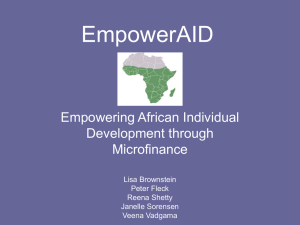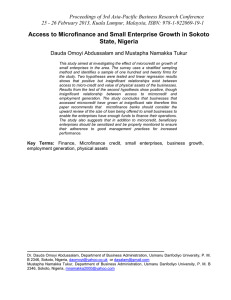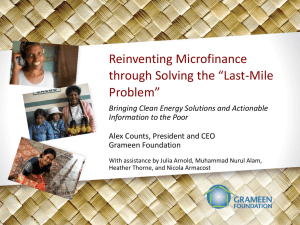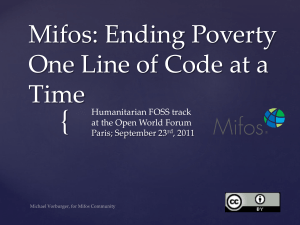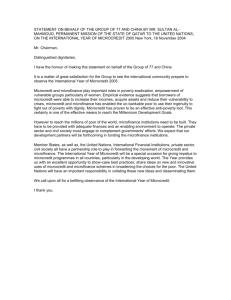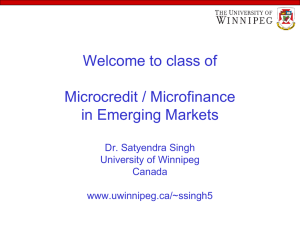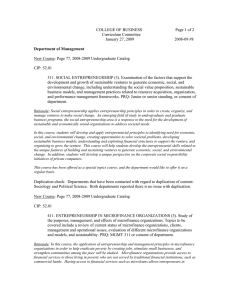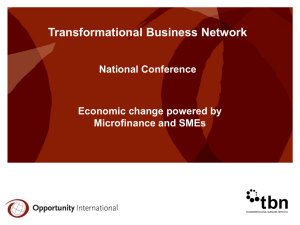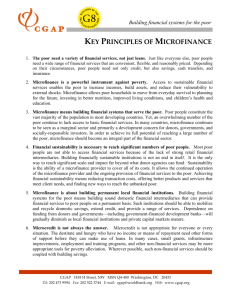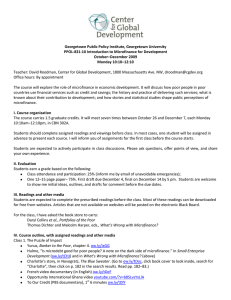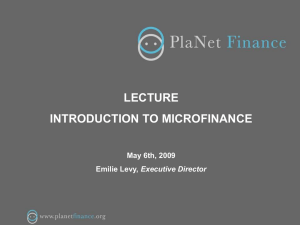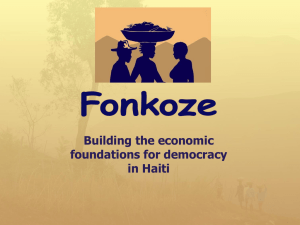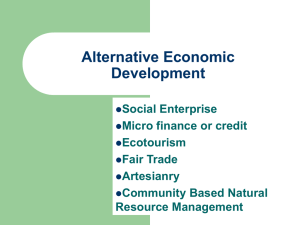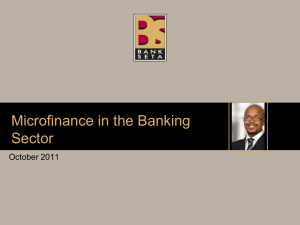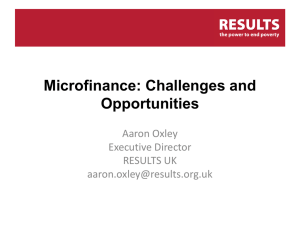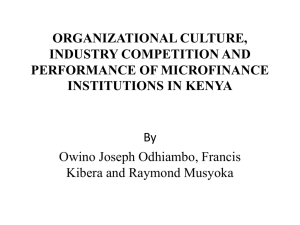Microcredit in Burkina Faso
advertisement
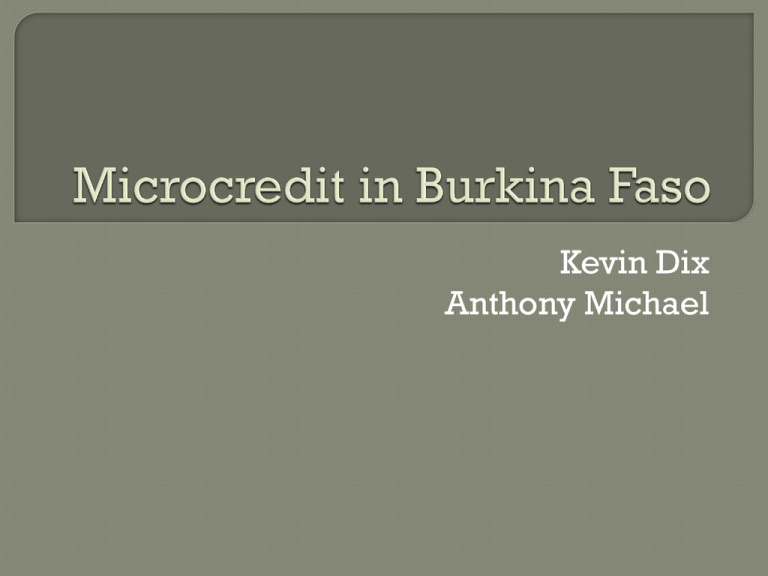
Kevin Dix Anthony Michael Giving small loans to impoverished borrowers • Lack collateral, steady employment Why Microcredit? • Promotes productive investments • Encourages entrepreneurs “CREDIT IS A FUNDAMENTAL HUMAN RIGHT” FOUNDED GRAMEEN BANK First modern microcredit institution Lent own money to poor basket weavers in Bangladesh (mid-1970s) • Successful model Grameen Today • Collects $1.5 million weekly • 97% of borrowers women Won Nobel Peace Prize in 2006 • 97% of loans paid back Higher than any other banking system Despite positive economic trends, still vast poverty Address material & non-material poverty Empower People • Confidence, self-esteem, & financial means to play larger role in their development Involves poor in Economic development Microcredit can meet financial needs of households and microenterprises • Especially poor Supply side • Loosen constraints on capital • Investment opportunities • Consumption smoothing • Emergency liquidity needs Demand side • Support savings of the poor Key Principles for an African Model: 1. Pool resources through group organization Pool together human and material resources Strength in numbers Promote networking, information dissemination Reduce administrative costs Group trust, support, pressure 2. Prioritize local knowledge (tradition) and participatory planning Increased sustainability Traditional methods should NOT be replaced 3. Rather built upon Advance African private sector Microcredit should lead to microenterprise development Formalize the informal sector Prioritize operational efficiency 4. Must be efficient, financially viable institutions Key principles that lead to efficiency: • • • • • Target poorest of poor Charge interest rates that cover operational costs Target women Poverty eradication depends on the poor gaining access to economically productive & financial resources Allow individuals to move beyond poverty cycle Challenges facing Burkina Faso: • 44.8% on less than $1/day • Droughts, poorly diversified agriculture • Inadequate road network • Limited energy resources • Landlocked • HDI: 183 of 187 countries Evaluate West African Economic and Monetary Union countries’ microfinance institutions (MFIs) • Outreach • Sustainability Analyzed data from a random sample of 6 MFIs in Burkina Faso • Federation des Caisses Populaires (FCPB) • Union des Coopératives d’Epargne et de Crédit du Bam • • • • (URCBam) Promotion du Développement Industriel et Agricole (PRODIA) Fonds d’Appui aix Activités des Femmes (FAARF) Association pour le Développement de la Région de Kaya (ADRK) Association ‘Etre comme les Autres’ (ECLA) Offer different types of micro credit • Short term individual or group credit Average loan amount between 7 and 500 USD 6-12 months • Medium or Long term individual credit Average loan amount between 400-4000 USD >12 months Average nominal growth rate was 25.3% per year 17.625 billion CFAF = 25.18 million USD Sustainable interest rates • Large transaction costs • Administrative costs • Loan losses • Financial costs • Desired capitalization rate • Investment income Highest repayment rates associated with group loans Maintain high repayments from individuals by giving a strong sense of ownership Subsidy dependence index • Each MFI would have to raise their interest rates by this % in order to eliminate subsidy dependence Conclusions Burkina Government • Subsidizes the microfinance institutions to cover their loses • Continues to subsidize them because they have direct benefits & positive externalities NGOs • Several of these provide the microfinance services • Rapid growth for the NGOs in microfinance • Ideal goals to reach all of their targeted poor population and be self sustainable Private sector • • • • Beneficial to poor and small entrepreneurs Increase productivity Increase wages Decreased informal lending Rural/Urban • Rural Larger transaction costs to provide financial services Better targets than urban Larger potential benefit • Urban Lower poverty rates compared to rural Target the peri-urban more More entrepreneurs Higher demand for financial services “Biography of Dr. Muhammad Yunus.” Grameen Bank. N.p., n.d. Web. 18 Nov. 2013 Congo, Youssoufou. “Performance in Microfinance Institutions in Burkina Faso.” World Institute for Development Economic Research (2002): 1-20. Web. 15 Nov. 2013 United Nations. UN Economic Commission for Africa. Microfinance in Africa: Combining the Best Practices of Traditional and Modern Microfinance Approaches towards Poverty Eradication. New York: United Nations, 2000. Web. United Nations. UN Office of the Special Adviser on Africa. Microfinance in Africa: Overview and Suggestions for Action by Stakeholders. New York: United Nations, September 2011. Web. Valadez R, Buskirk B. From Microcredit to Microfinance: a business perspective. Journal of Finance & Accountancy [serial online]. March 2011;6:1-17. Available from: Business Source Complete, Ipswich, MA. Accessed November 18, 2013.

